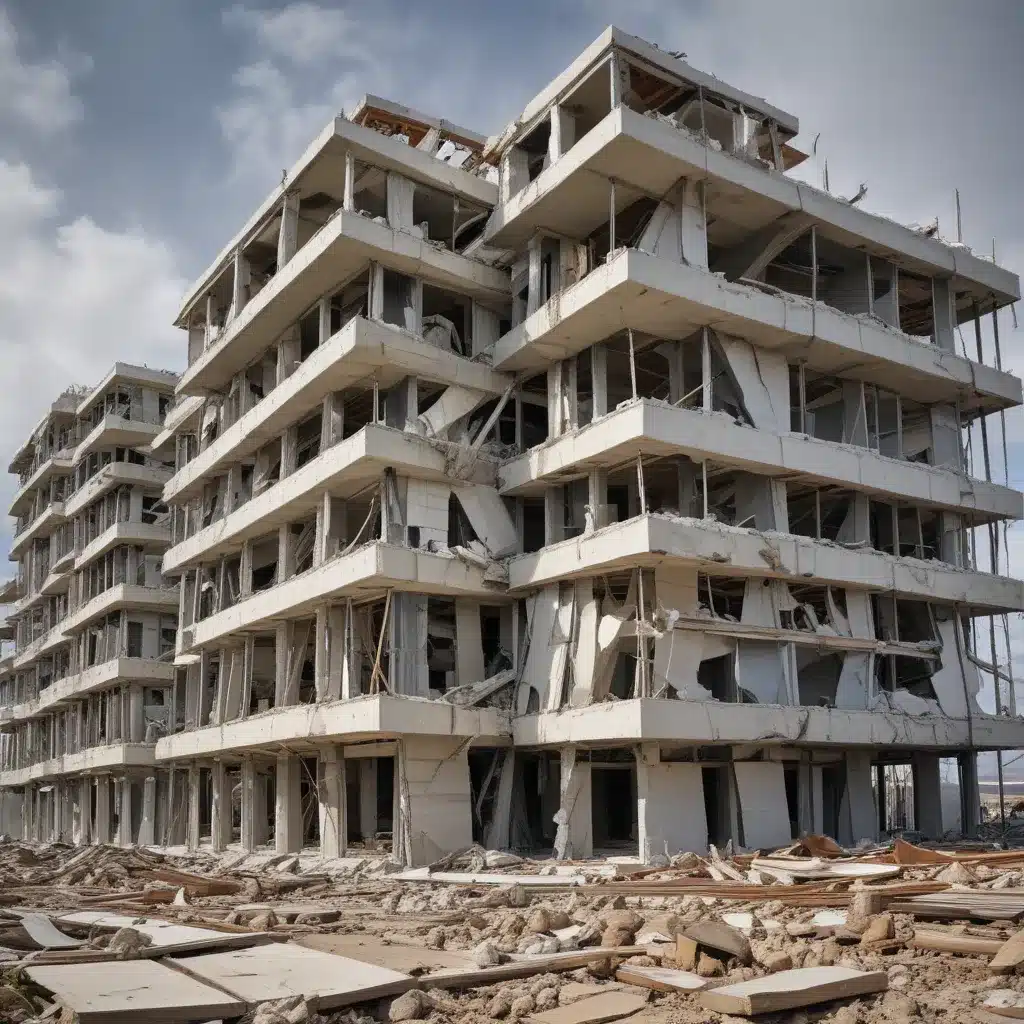
The Importance of Disaster-Resilient Design
As a seasoned architect, I’ve seen firsthand the devastating impact that natural disasters can have on our built environment. From the towering infernos that ravage drought-stricken regions to the earth-shaking tremors that can crumble even the sturdiest of structures, the need for buildings designed to withstand these calamities has never been more critical. In this in-depth exploration, we’ll delve into the crucial principles of disaster-resilient design, examining the innovative strategies and cutting-edge technologies that are reshaping the way we construct our cities and communities.
Let’s begin by considering the sheer scale and frequency of natural disasters worldwide. The United Nations Office for Disaster Risk Reduction reports that over the past two decades, climate-related disasters have increased by 151%, with floods and storms accounting for the majority of these events. And the prognosis is sobering – as climate change continues to intensify, the severity and unpredictability of these natural phenomena are only expected to escalate.
Designing for Disaster Preparedness
So, how can we, as architects and engineers, ensure that our buildings are equipped to weather these storms? The answer lies in a multifaceted approach that incorporates resilient design principles from the ground up. One of the foundational elements is a thorough understanding of the specific risks facing a given location. What natural hazards are most prevalent in the region? How frequent and intense are they likely to be in the coming years? By conducting detailed site assessments and consulting with experts in disaster management, we can tailor our designs to the unique challenges of the local environment.
Another critical component is the selection of building materials and systems that can withstand the forces of nature. This might include reinforced concrete foundations capable of withstanding seismic activity, impact-resistant windows and doors to guard against flying debris, or advanced roofing systems engineered to resist high winds and heavy snowfall. Additionally, the incorporation of passive design strategies, such as natural ventilation and water-efficient landscaping, can enhance a building’s resilience by reducing its reliance on vulnerable utility infrastructure.
Embracing an integrated, holistic approach to disaster preparedness is also paramount. This means considering not only the structural integrity of a building but also its ability to maintain essential functions and provide refuge during and after a crisis. Redundant power systems, on-site water treatment, and robust communication networks are just a few examples of the resilient features that can transform a structure into a true “shelter-in-place” during times of emergency.
Innovative Technologies and Adaptive Design
As we continue to grapple with the complexities of natural disaster risk, the design community has been at the forefront of developing cutting-edge solutions. One such innovation is the use of advanced modelling and simulation tools to predict a building’s performance under various disaster scenarios. By running complex simulations that account for factors like wind, seismic activity, and flooding, designers can identify vulnerabilities and optimize their designs accordingly.
Another emerging trend is the integration of adaptive and “smart” building technologies. These systems, powered by the Internet of Things (IoT) and artificial intelligence, can monitor environmental conditions in real-time and automatically adjust the building’s operations to maintain optimal performance. For example, a self-adjusting façade system could dynamically modify its shading or ventilation in response to changing weather patterns, reducing the strain on critical infrastructure.
Collaboration and Community Resilience
Designing disaster-resilient buildings is not solely the responsibility of architects and engineers; it requires a collaborative effort involving a wide range of stakeholders, from local government agencies to community organizations. By fostering these cross-disciplinary partnerships, we can ensure that disaster preparedness is woven into the fabric of urban planning and development.
One particularly promising avenue is the integration of community resilience strategies into the design process. This might involve engaging with local residents to understand their unique needs and concerns, or working with emergency response teams to identify critical infrastructure and evacuation routes. By empowering communities to play an active role in the design and implementation of disaster-resilient measures, we can build a sense of ownership and foster a culture of preparedness that extends far beyond the walls of any single building.
The Road Ahead: Designing for a Resilient Future
As we look to the future, the imperative to design buildings that can withstand the challenges of a changing climate has never been more pressing. By embracing a holistic, innovative, and collaborative approach to disaster-resilient design, we can create built environments that not only protect lives and property but also foster a sense of security and resilience within our communities.
At Construction Trade X, we are committed to leading the way in this critical endeavor. Our team of experienced architects, engineers, and construction professionals are at the forefront of developing and implementing the latest disaster-resilient design strategies, drawing from a wealth of real-world case studies and industry expertise. Whether you’re embarking on a new construction project or looking to retrofit an existing structure, we are here to provide the guidance, tools, and resources you need to build a more resilient future.
So, let’s roll up our sleeves and get to work. The challenges ahead may be daunting, but with the right mindset, the right tools, and the right collaborative spirit, I’m confident that we can design a built environment that stands firm in the face of even the most formidable natural disasters.